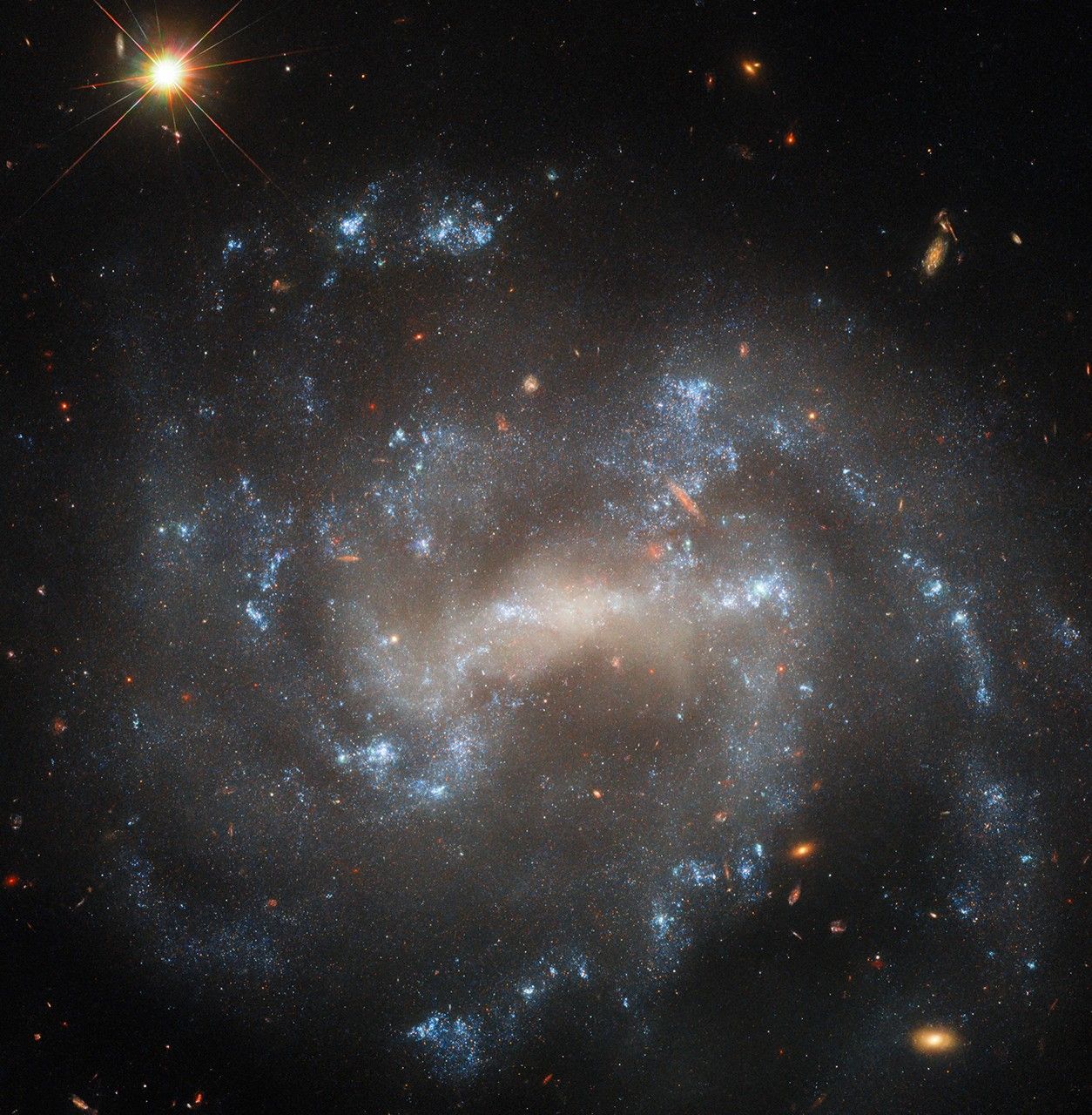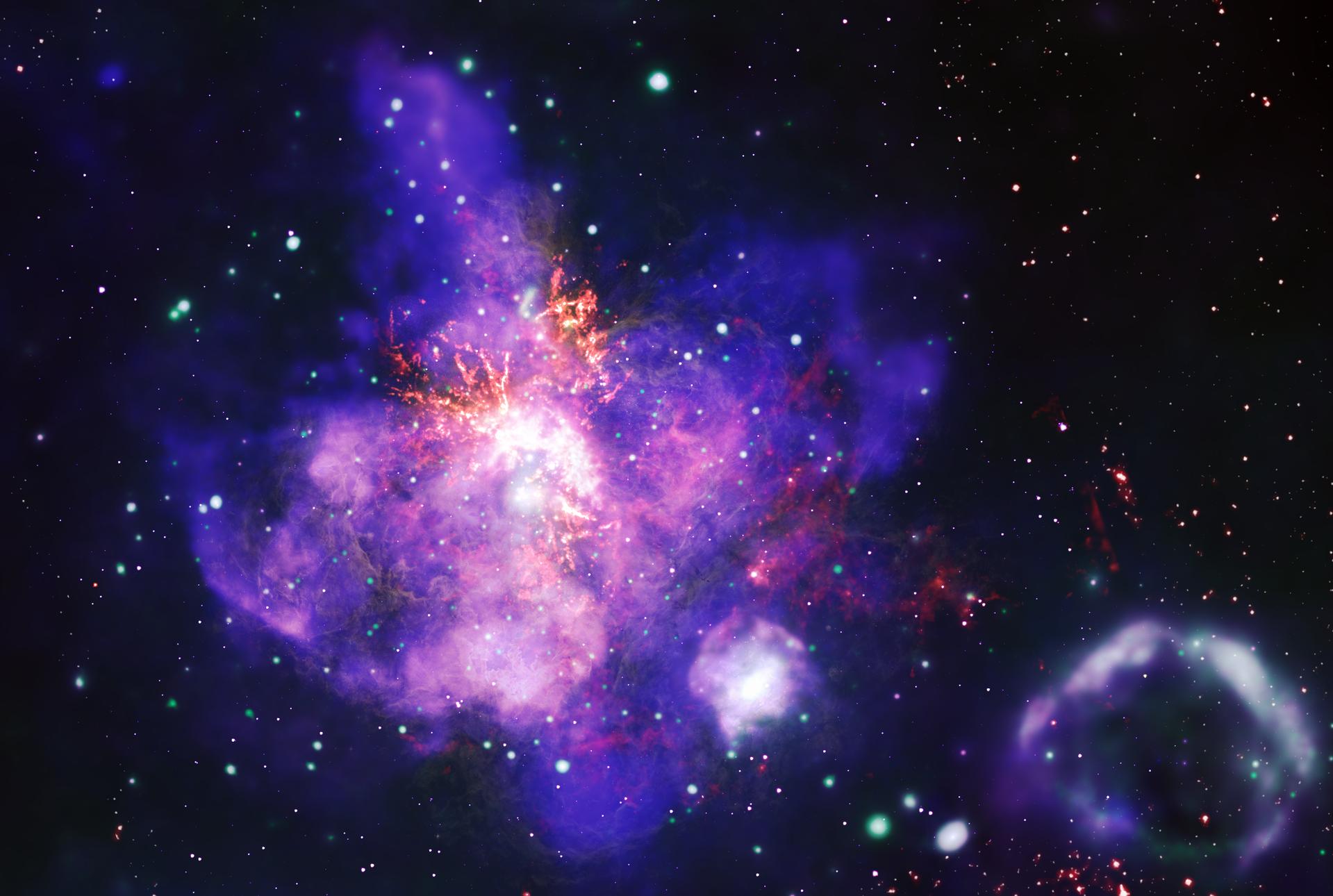A Flaming Flower in the Large Magellanic Cloud
Our neighbour, the Large Magellanic Cloud (LMC), is rich in gas and dust and hosts regions of extremely robust star formation. It contains about 700 open clusters, groups of gravitationally bound stars that all formed from the same giant molecular cloud. The clusters can contain thousands of stars, all emitting vibrant energy that lights up … Continue reading "A Flaming Flower in the Large Magellanic Cloud" The post A Flaming Flower in the Large Magellanic Cloud appeared first on Universe Today.

Our neighbour, the Large Magellanic Cloud (LMC), is rich in gas and dust and hosts regions of extremely robust star formation. It contains about 700 open clusters, groups of gravitationally bound stars that all formed from the same giant molecular cloud. The clusters can contain thousands of stars, all emitting vibrant energy that lights up their surroundings.
One of these clusters is NGC 2040 in the constellation of Dorado, and the Gemini South Telescope captured its portrait.
NGC 2040 is noteworthy because it contains so many O-type and B-type stars. They’re hot, massive stars that tend to live fast and die young as explosive supernovae. The cluster contains more than a dozen of these stars.
There are two things at play in this image. Supernova explosions buffet the gas and dust and help shape the nebula while the young stars light it up. The explosions also create shock waves that compress the surrounding gas, leading to the formation of the next generation of stars.
A press release describes the nebula as a “Valentine’s Day rose.” What we’re really seeing is oxygen and hydrogen atoms energized by UV light from young stars and emitting light at different wavelengths. However, since it’s Valentine’s Day, we’ll concede to their more poetic description.
Human eyes can never see something like this naturally. The light spans wavelengths from the ultraviolet to the optical to the infrared. Instead, the Gemini South telescope captures the light at wavelengths beyond our range. The telescope employs filters to manage the light, showing us the deep red and orange colours from hydrogen and the light blue of oxygen. Bright white regions are abundant in both. It’s a nice partnership between telescope technology and human vision.
NGC 2024 is part of a larger structure called LH 88, one of the LMC’s largest star formation regions. The stars in the cluster are moving together, though they’re widely separated. They’re ensconced in gas and dust, some left behind by stars that have already exploded as supernovae. The gas and dust are further shaped by the strong stellar winds from so many young stars.
Our Sun likely formed in a cluster similar to NGC 2024. However, since that happened about five billion years ago, the stars have dispersed, and so have the gas and dust. There’s no more nebula.

It might not seem like it in our busy lives here on Earth’s surface, but this image tells a story we’re all wrapped up in: The cyclical nature of birth, death, and rebirth. When stars die and explode as supernovae, their material is expelled into space and taken up in the next round of star formation. And who knows, some of that material may be taken up in planet formation, maybe even rocky planets in the habitable zones of some of the new stars. Perhaps life will take root on one of those planets.

Image Processing: J. Miller & M. Rodriguez (International Gemini Observatory/NSF NOIRLab), T.A. Rector (University of Alaska Anchorage/NSF NOIRLab), M. Zamani (NSF NOIRLab)
Nothing lasts forever. Everything has a beginning and an end. One day, our Sun will become a red giant, Earth will be destroyed, and humanity may be destroyed with it. Though it’s a bleak proposition, it seems likely. But so is a kind of rebirth in a Universe that constantly recycles matter.
“Death is certain for one who has been born, and rebirth is inevitable for one who has died,” the Bhagavad Gita tells us. “Therefore, you should not lament over the inevitable.”
The post A Flaming Flower in the Large Magellanic Cloud appeared first on Universe Today.













































































































































